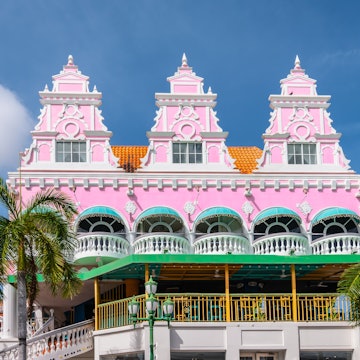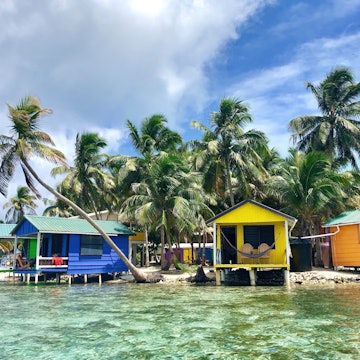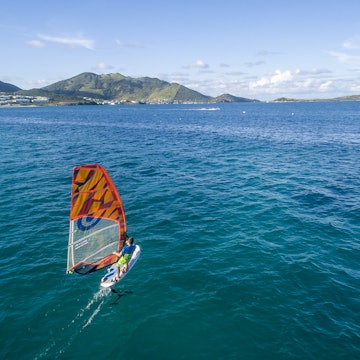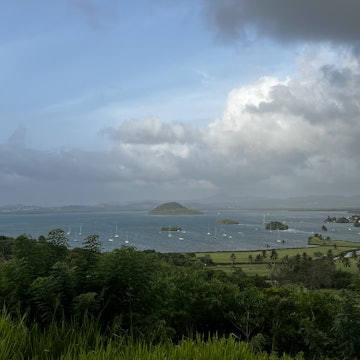
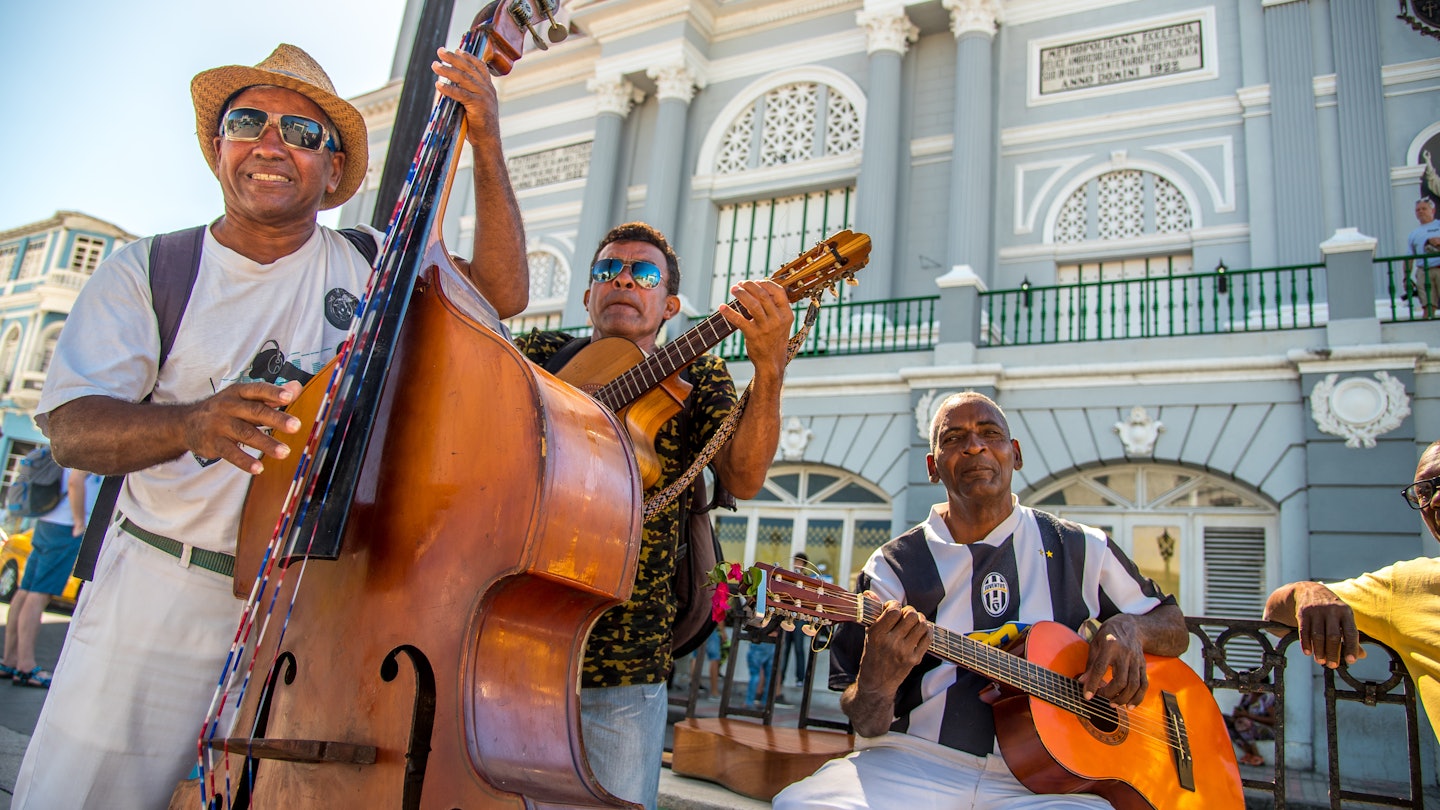
Catch live music in Santiago, find beach bliss or stroll city squares at the perfect time for your visit to Cuba. Ondrej Bucek/Shutterstock
With gorgeous beaches and no winter to speak of, Cuba befits a tropical escape year-round. Cultural festivals and live music pack the calendar every month, and the weather cycles from mild to warm to hot as hell with the changing seasons. When to visit depends as much on your top activities as your tolerance for crowds and personal humidity capacity.
Schools close for July and August, which are also the warmest part of year, making it a busy period for local tourism. And be sure to check the weather forecast, particularly during the June to November hurricane season, before booking your trip.
Here’s the lowdown on the best times to visit Cuba, the Caribbean’s biggest island.
November to March bustle (but accommodations are more costly)
Between November and March, Cuba is bursting with holidaymakers as families escape the cold North American winter. The weather is mild but usually dry and sunny. Cold fronts bring cooler evenings in January and February so you might want to pack a jacket.
Peak tourist season makes reservations essential for accommodations and car rentals. Prices are at their highest for hotels and homestays, rising even higher around Christmas and New Year's.
In December, a film festival fills Havana, while provincial festivities and traditional events called parrandas and charangas see locals go fireworks-crazy.
If you visit in January, expect jam sessions in cities such as Havana and Santiago de Cuba during the Festival Internacional de Jazz, which draws musicians and fans from all over the world.
February is the best time for diving and snorkeling on Cuba’s south coast. It is also perfect for outdoor activities such as hiking and cycling.
An incredible variety of migratory birds – more than 260 species – use Cuba as a stopover in March, mingling with the resident species. The wetlands of Ciénaga de Zapata and Peninsula de Guanahacabibes in Pinar del Río are particularly prime locations for birdwatching.

April and October relax with fewer crowds
By April, the weather in Cuba is already warm, but it's less rainy than in the early summer. Beaches are less crowded than during the peak of summer, except during Semana de la Victoria (Victory Week) when Cubans vacation to celebrate the island's victory over anti-Castro forces at Playa Girón in 1961. This event sometimes overlaps with Easter week, which sees a surge in foreign visitors.
October is still hot but not as muggy as the summer, and you can score a good deal before peak season hits. Be aware that there's a risk of severe tropical storms before the hurricane season ends in November.
May, June and September are the best for budget travelers
It’s rainy and hot at the start and end of the Cuban summer, but the low season is the best time to take advantage of the lowest prices for hotels and casas particulares (private homestays). Always check the weather forecast before you depart: June to November is hurricane season, and there remains a chance of a strong storm.
In May, Romerías de Mayo brings music fans to Holguín, and Mayo Teatral in Havana is great for lovers of theater and drama. One of the best months for budget travelers also coincides with a three-week celebration of the LGBTIQ+ community, when the Conga Cubana contra la Homofobia y la Transfobia parade showcases music and dance throughout Havana’s La Rampa (Calle 23). Expect performances of conga – a style of Cuban rumba that is danced while walking – alongside educational workshops, concerts and conferences.
June is the start of hurricane season, but that doesn't need stop you from soaking up warm days on the beach with few other visitors. This month is a good time to avoid the crowds and enjoy provincial festivals – before hurricane season really gets going.

July and August heat up
The summer months of July and August are the liveliest time of year to visit Cuba but also the hottest, and there's a fair amount of rain. Local schools are closed, and it's the height of the domestic tourism season, so expect busy beaches and hotels in popular destinations such as Varadero and fringing islands such as Cayo Coco. Be sure to book accommodations and activities in advance.
In late July, Santiago de Cuba hosts Carnaval, one of the nation’s most dynamic festivals, with colorful parades, irresistible rhythms and energetic dances.
Come August, Havana organizes an annual carnival, and Varadero puts on a fantastic music festival that combines the best of jazz and son cubano, a Cuban music genre considered the foundation of modern salsa. Hotel rates start to come down after August 25.







